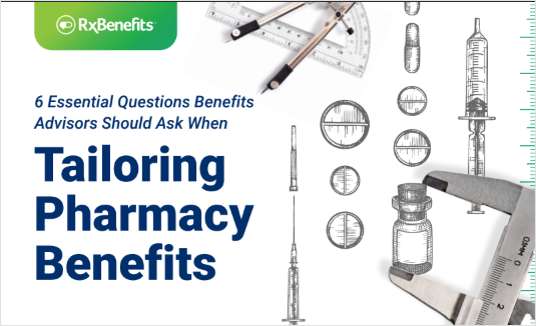Don't Go Bare: E&O Insurance May Keep The Cold Away
It is estimated by the American Bar Association that 5 to 6 percent of all private attorneys face a legal malpractice claim each year. It is further…
August 17, 2017 at 11:40 AM
8 minute read
It is estimated by the American Bar Association that 5 to 6 percent of all private attorneys face a legal malpractice claim each year. It is further estimated that the cost of litigation is far greater than the cost of legal malpractice insurance. While Connecticut is one of a majority of states that do not require attorneys to have legal malpractice insurance (and still one of about half of all states where attorneys do not yet have to disclose to clients whether they have malpractice insurance), the statistics on costs make it clear that every attorney should investigate and obtain legal malpractice insurance. At the end of the day, depending on the claims and type of law involved, a legal malpractice claim can be devastating to you and your practice. The best protection is to have legal malpractice insurance.
There are many variables to explore when obtaining a legal malpractice insurance policy, as with most any type of insurance. The amount of coverage should be linked to the areas of practice in which your firm engages, as well as the number of cases you handle. Some areas of law, including intellectual property, securities, trusts and estate law, medical malpractice and personal injury, lend themselves to much greater exposure than other areas. This is a pertinent consideration in amount of coverage. Another consideration is the cost of defense and litigation. It can easily cost hundreds of thousands of dollars to try a legal malpractice case to verdict. This should factor in to, not only the amount of insurance you consider, but also your deductible. The cost of defending a lawsuit may be counted against your total limits in your policy.
Different types of policies are available: Claims-made policies and occurrence-based policies. While the difference may be obvious to many attorneys, there have been instances where a failure to understand the type of policy resulted in the insurance company disclaiming coverage. A claims-made policy covers claims made during the policy period. An occurrence-based policy protects the insured from damages resulting from acts occurring during the policy period, with less focus on when the claim is brought. Failing to understand the type of policy you have—or when your coverage period begins or ends—may result in a denial of coverage. (See Itc Invs. v. Employers Reinsurance Corp., 2000 Conn. Super. LEXIS 3544, *16, 2000 WL 1996233 (Conn. Super. Ct. Dec. 11, 2000)). With a claims-made policy, even though there is coverage for claims made within the policy dates, there can be exclusion language that excludes claims that have arisen before a certain date. It is essential to read the policy language and know precisely what you are getting.
This content has been archived. It is available through our partners, LexisNexis® and Bloomberg Law.
To view this content, please continue to their sites.
Not a Lexis Subscriber?
Subscribe Now
Not a Bloomberg Law Subscriber?
Subscribe Now
NOT FOR REPRINT
© 2024 ALM Global, LLC, All Rights Reserved. Request academic re-use from www.copyright.com. All other uses, submit a request to [email protected]. For more information visit Asset & Logo Licensing.
You Might Like
View All
Insurance Company Sues Over 180 Health Care Providers for Fraud Under RICO
3 minute read
Amid Growing Litigation Volume, Don't Expect UnitedHealthcare to Change Its Stripes After CEO's Killing
6 minute read
Progressive Hit With Class Action After Allegedly Unlawfully Denying Collision Coverage
3 minute read
Trending Stories
- 1Pennsylvania Firms Went All in on Mergers in 2024
- 2Avoiding Conflict When Relating Advice to an Adverse Party to Facilitate a Client Matter
- 3'We Are Far From Finished': Amazon Pro Bono Program Raises Sights After Championing Justice From West Virginia to Ukraine
- 4AI Laws To Keep An Eye On In 2025
- 5Topping Kirkland, Weil Won the Most Valuable Major Bankruptcy Retentions of 2024
Who Got The Work
Michael G. Bongiorno, Andrew Scott Dulberg and Elizabeth E. Driscoll from Wilmer Cutler Pickering Hale and Dorr have stepped in to represent Symbotic Inc., an A.I.-enabled technology platform that focuses on increasing supply chain efficiency, and other defendants in a pending shareholder derivative lawsuit. The case, filed Oct. 2 in Massachusetts District Court by the Brown Law Firm on behalf of Stephen Austen, accuses certain officers and directors of misleading investors in regard to Symbotic's potential for margin growth by failing to disclose that the company was not equipped to timely deploy its systems or manage expenses through project delays. The case, assigned to U.S. District Judge Nathaniel M. Gorton, is 1:24-cv-12522, Austen v. Cohen et al.
Who Got The Work
Edmund Polubinski and Marie Killmond of Davis Polk & Wardwell have entered appearances for data platform software development company MongoDB and other defendants in a pending shareholder derivative lawsuit. The action, filed Oct. 7 in New York Southern District Court by the Brown Law Firm, accuses the company's directors and/or officers of falsely expressing confidence in the company’s restructuring of its sales incentive plan and downplaying the severity of decreases in its upfront commitments. The case is 1:24-cv-07594, Roy v. Ittycheria et al.
Who Got The Work
Amy O. Bruchs and Kurt F. Ellison of Michael Best & Friedrich have entered appearances for Epic Systems Corp. in a pending employment discrimination lawsuit. The suit was filed Sept. 7 in Wisconsin Western District Court by Levine Eisberner LLC and Siri & Glimstad on behalf of a project manager who claims that he was wrongfully terminated after applying for a religious exemption to the defendant's COVID-19 vaccine mandate. The case, assigned to U.S. Magistrate Judge Anita Marie Boor, is 3:24-cv-00630, Secker, Nathan v. Epic Systems Corporation.
Who Got The Work
David X. Sullivan, Thomas J. Finn and Gregory A. Hall from McCarter & English have entered appearances for Sunrun Installation Services in a pending civil rights lawsuit. The complaint was filed Sept. 4 in Connecticut District Court by attorney Robert M. Berke on behalf of former employee George Edward Steins, who was arrested and charged with employing an unregistered home improvement salesperson. The complaint alleges that had Sunrun informed the Connecticut Department of Consumer Protection that the plaintiff's employment had ended in 2017 and that he no longer held Sunrun's home improvement contractor license, he would not have been hit with charges, which were dismissed in May 2024. The case, assigned to U.S. District Judge Jeffrey A. Meyer, is 3:24-cv-01423, Steins v. Sunrun, Inc. et al.
Who Got The Work
Greenberg Traurig shareholder Joshua L. Raskin has entered an appearance for boohoo.com UK Ltd. in a pending patent infringement lawsuit. The suit, filed Sept. 3 in Texas Eastern District Court by Rozier Hardt McDonough on behalf of Alto Dynamics, asserts five patents related to an online shopping platform. The case, assigned to U.S. District Judge Rodney Gilstrap, is 2:24-cv-00719, Alto Dynamics, LLC v. boohoo.com UK Limited.
Featured Firms
Law Offices of Gary Martin Hays & Associates, P.C.
(470) 294-1674
Law Offices of Mark E. Salomone
(857) 444-6468
Smith & Hassler
(713) 739-1250










